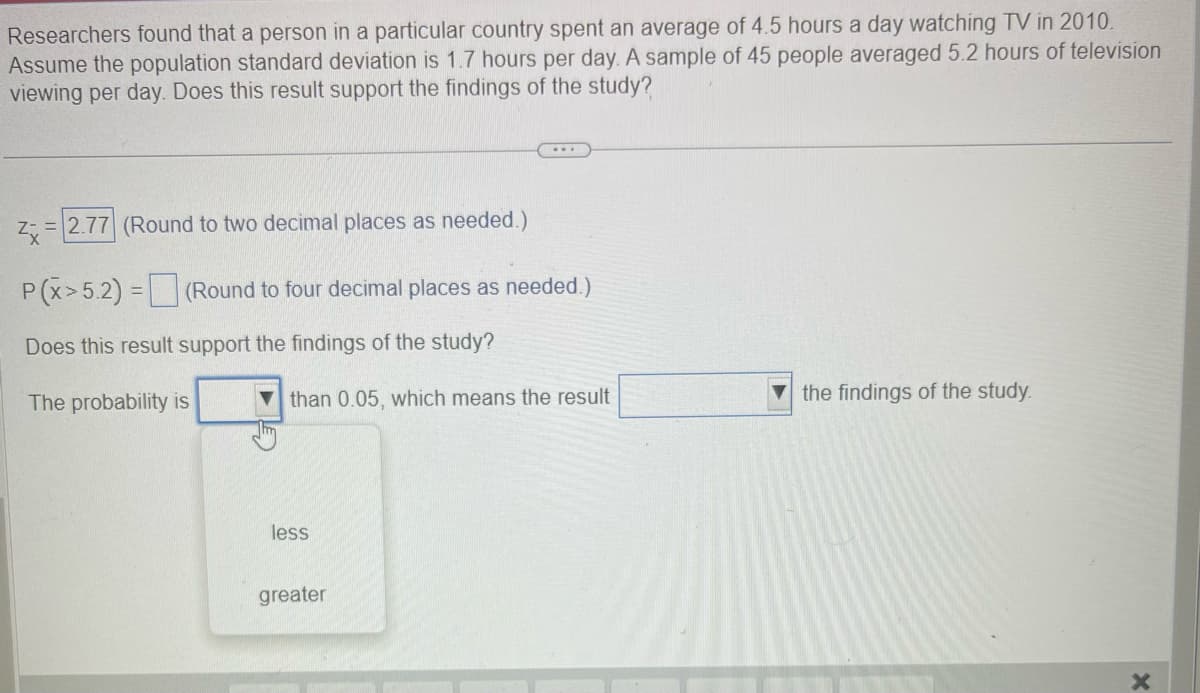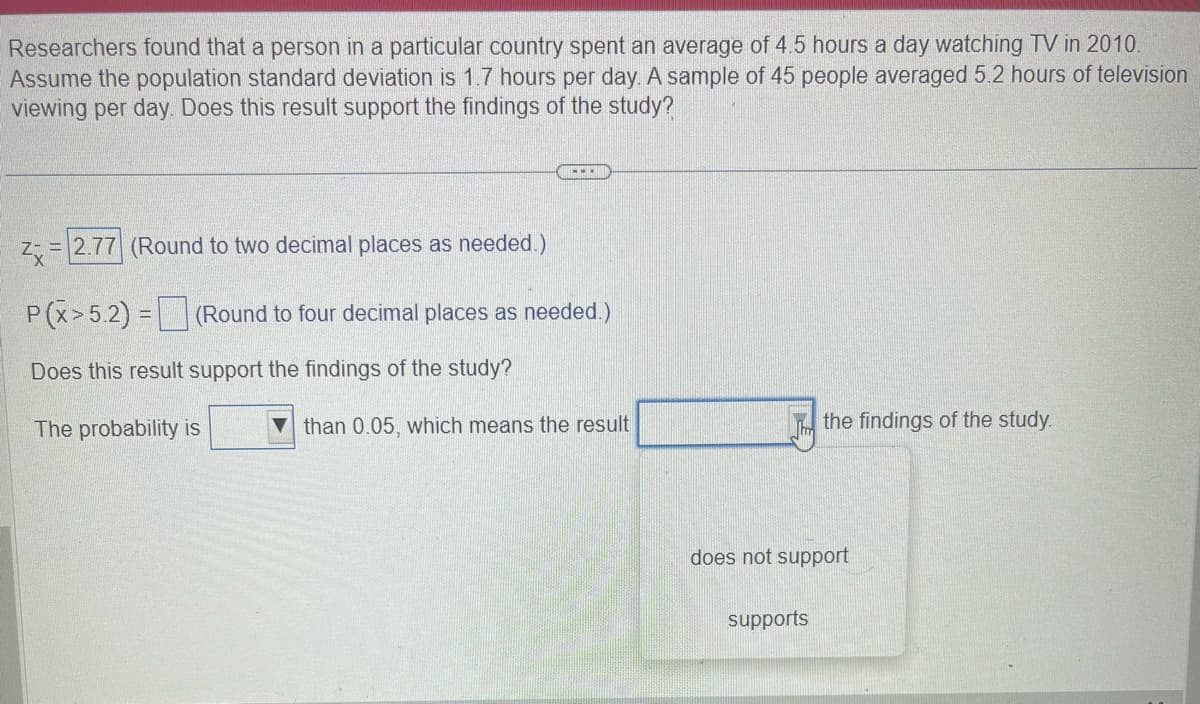Researchers found that a person in a particular country spent an average of 4.5 hours a day watching TV in 2010. Assume the population standard deviation is 1.7 hours per day. A sample of 45 people averaged 5.2 hours of television viewing per day. Does this result support the findings of the study? zx= = 2.77 (Round to two decimal places as needed.) P(x>5.2) = (Round to four decimal places as needed.) Does this result support the findings of the study? The probability is than 0.05, which means the result less greater the findings of the study. X
Researchers found that a person in a particular country spent an average of 4.5 hours a day watching TV in 2010. Assume the population standard deviation is 1.7 hours per day. A sample of 45 people averaged 5.2 hours of television viewing per day. Does this result support the findings of the study? zx= = 2.77 (Round to two decimal places as needed.) P(x>5.2) = (Round to four decimal places as needed.) Does this result support the findings of the study? The probability is than 0.05, which means the result less greater the findings of the study. X
Glencoe Algebra 1, Student Edition, 9780079039897, 0079039898, 2018
18th Edition
ISBN:9780079039897
Author:Carter
Publisher:Carter
Chapter10: Statistics
Section10.3: Measures Of Spread
Problem 26PFA
Related questions
Question

Transcribed Image Text:Researchers found that a person in a particular country spent an average of 4.5 hours a day watching TV in 2010.
Assume the population standard deviation is 1.7 hours per day. A sample of 45 people averaged 5.2 hours of television
viewing per day. Does this result support the findings of the study?
Z=
= 2.77 (Round to two decimal places as needed.)
P(x>5.2) = (Round to four decimal places as needed.)
Does this result support the findings of the study?
The probability is
than 0.05, which means the result
less
greater
the findings of the study.
X

Transcribed Image Text:Researchers found that a person in a particular country spent an average of 4.5 hours a day watching TV in 2010.
Assume the population standard deviation is 1.7 hours per day. A sample of 45 people averaged 5.2 hours of television
viewing per day. Does this result support the findings of the study?
Z=
= 2.77 (Round to two decimal places as needed.)
----
P(x>5.2) = (Round to four decimal places as needed.)
Does this result support the findings of the study?
The probability is
than 0.05, which means the result
the findings of the study.
does not support
supports
Expert Solution
This question has been solved!
Explore an expertly crafted, step-by-step solution for a thorough understanding of key concepts.
Step by step
Solved in 2 steps with 1 images

Recommended textbooks for you

Glencoe Algebra 1, Student Edition, 9780079039897…
Algebra
ISBN:
9780079039897
Author:
Carter
Publisher:
McGraw Hill

Glencoe Algebra 1, Student Edition, 9780079039897…
Algebra
ISBN:
9780079039897
Author:
Carter
Publisher:
McGraw Hill